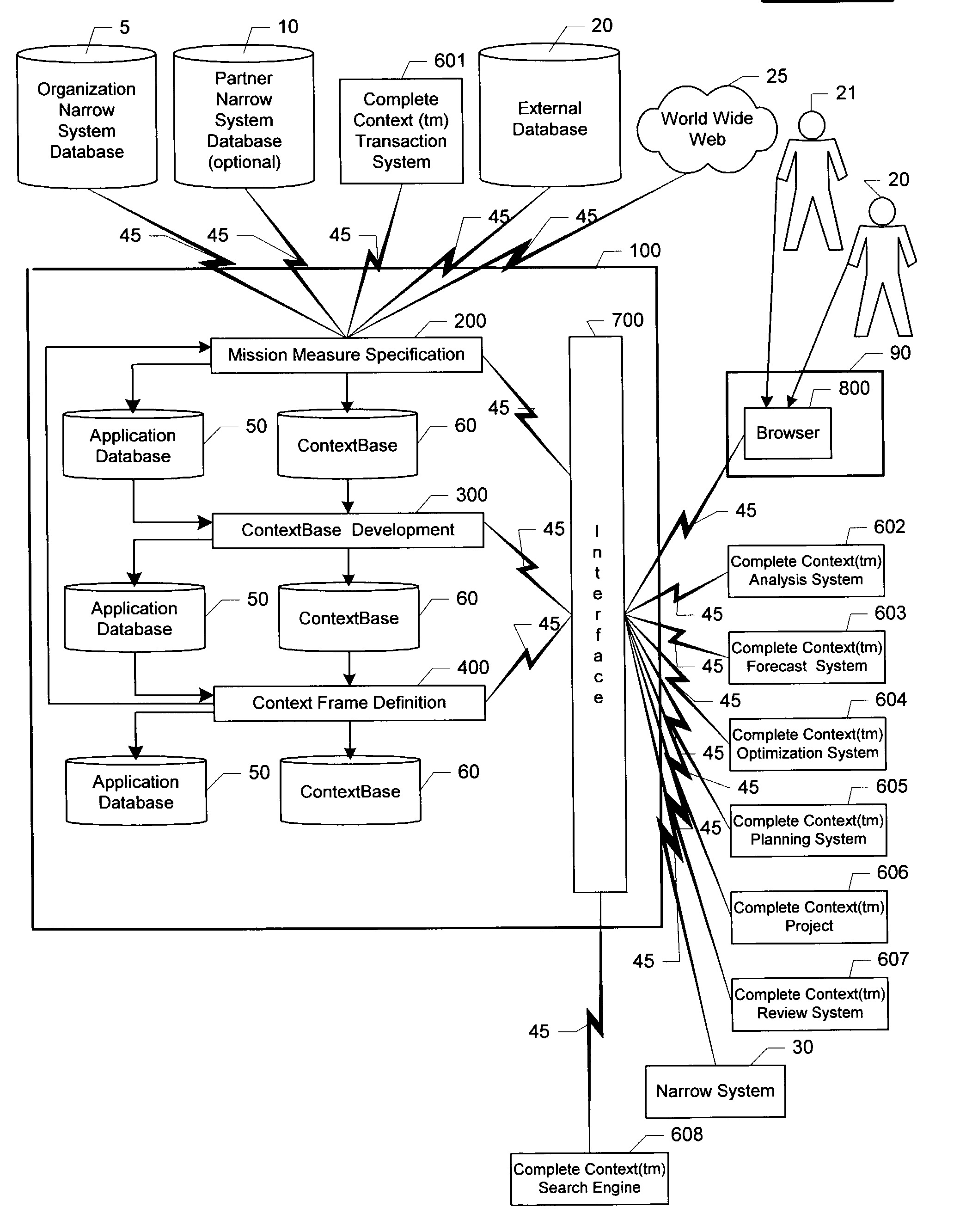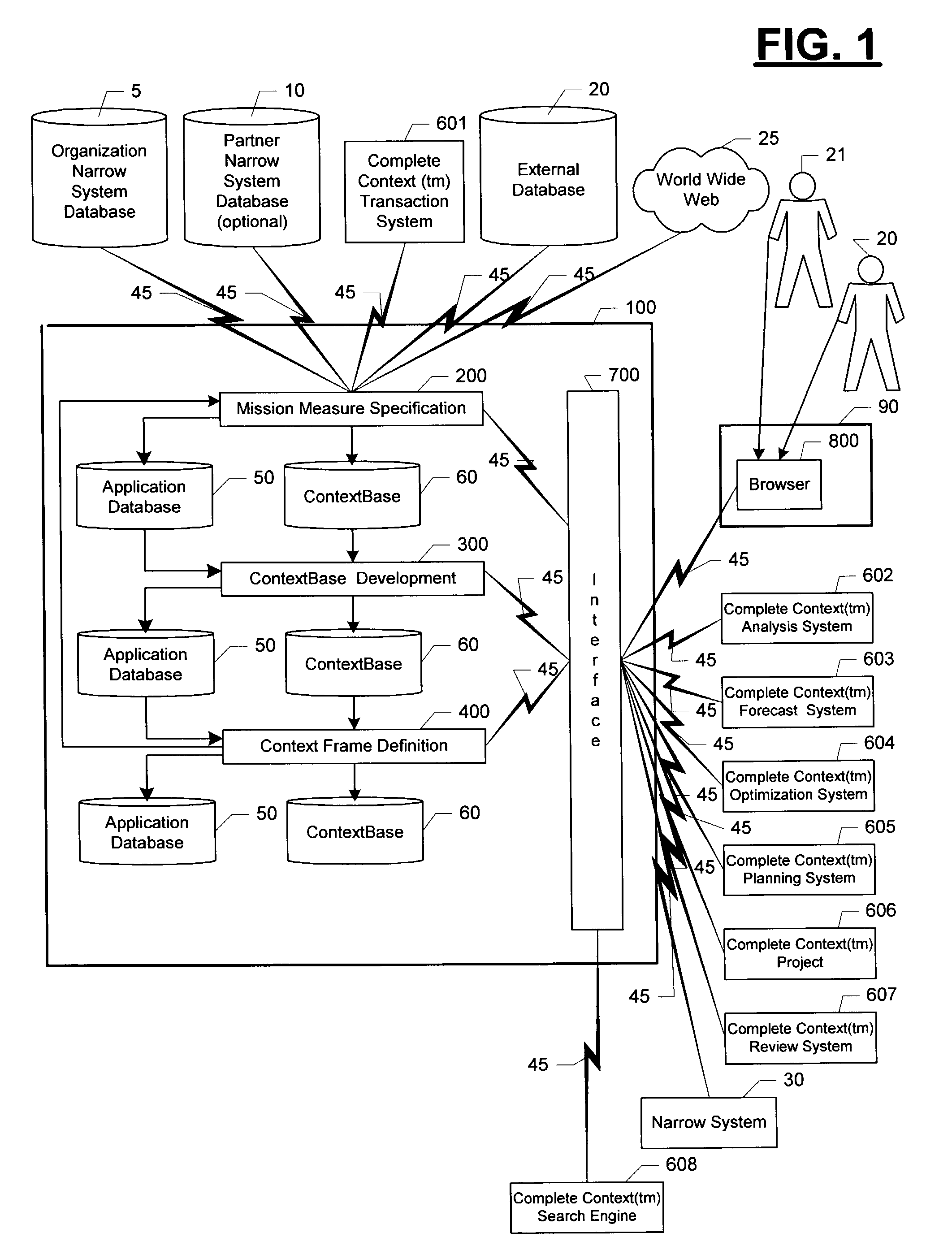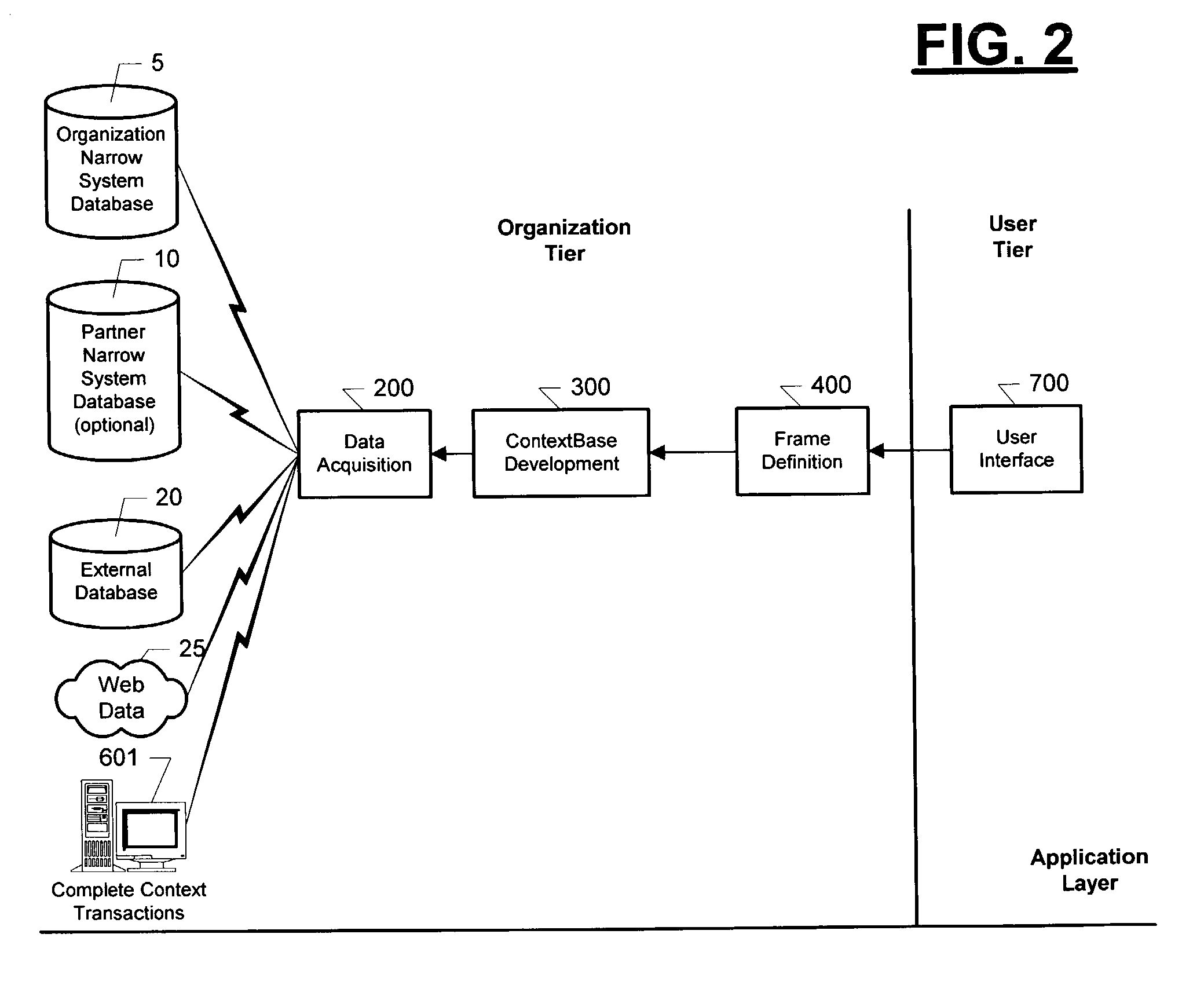Knowledge based performance management system
a performance management and knowledge technology, applied in the field of knowledge based performance management, can solve the problems of more complicated use of mission measures, and achieve the effects of improving mission measure performance, facilitating its use, and improving mission performan
- Summary
- Abstract
- Description
- Claims
- Application Information
AI Technical Summary
Benefits of technology
Problems solved by technology
Method used
Image
Examples
Embodiment Construction
[0087]FIG. 1 provides an overview of the processing completed by the innovative system for knowledge based performance management. In accordance with the present invention, an automated system (100) and method for developing a mission-oriented ContextBase (60) that contains the six context layers for each mission measure by organization and organization level is provided. Processing starts in this system (100) when the data extraction portion of the application software (200) extracts data from an organization narrow system database (5); optionally, a partner narrow system database (10); an external database (20); and a world wide web (25) via a network (45). Data may also be obtained from a Complete Context™ Transaction System (601) via the network (45) in this stage of processing. The processing completed by the system (100) may be influenced by a user (20) or a manager (21) through interaction with a user-interface portion of the application software (700) that mediates the displ...
PUM
 Login to View More
Login to View More Abstract
Description
Claims
Application Information
 Login to View More
Login to View More - R&D
- Intellectual Property
- Life Sciences
- Materials
- Tech Scout
- Unparalleled Data Quality
- Higher Quality Content
- 60% Fewer Hallucinations
Browse by: Latest US Patents, China's latest patents, Technical Efficacy Thesaurus, Application Domain, Technology Topic, Popular Technical Reports.
© 2025 PatSnap. All rights reserved.Legal|Privacy policy|Modern Slavery Act Transparency Statement|Sitemap|About US| Contact US: help@patsnap.com



